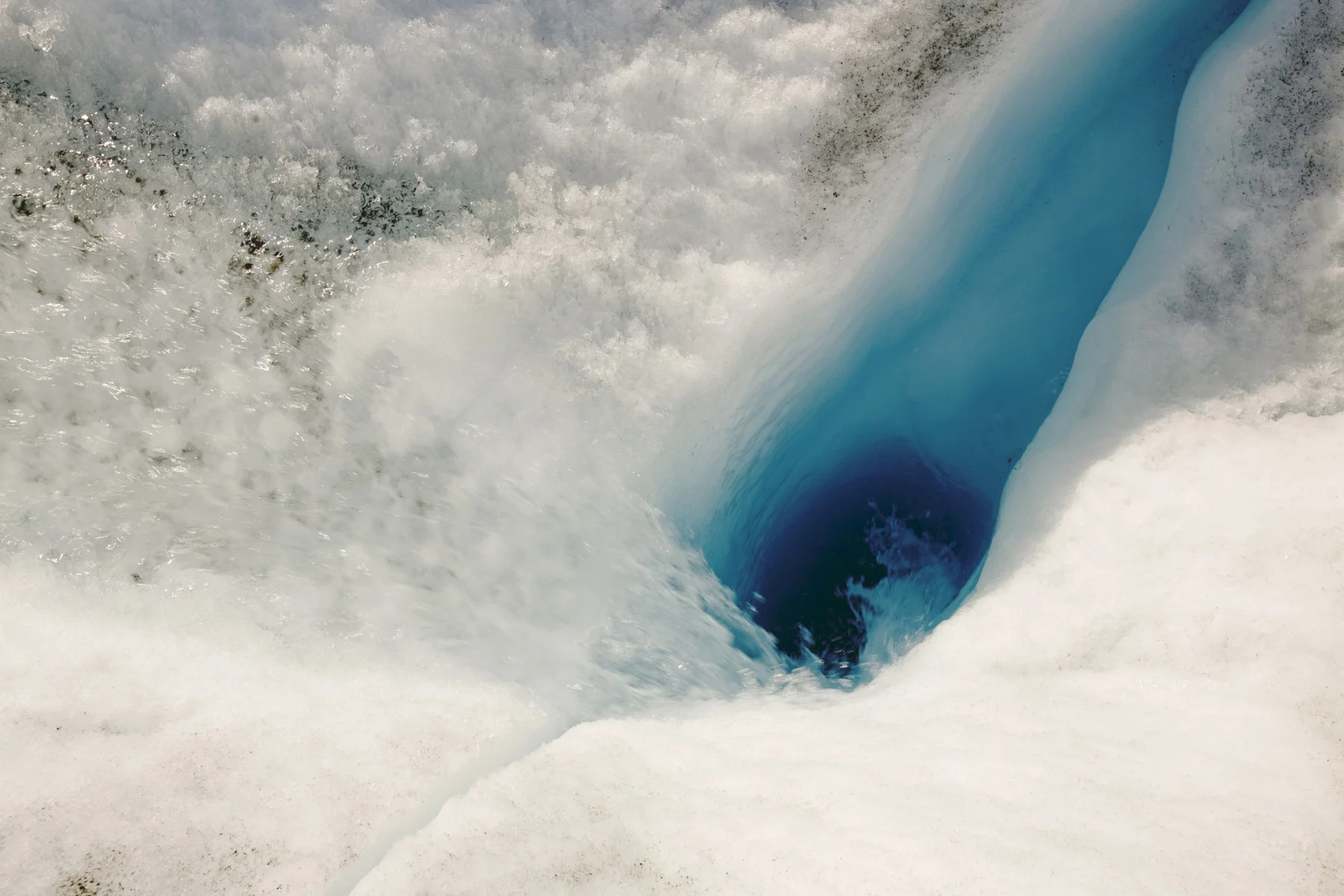
"Water blisters" offer a glimpse beneath Greenland’s thick ice sheet
Observations reveal that melting on the surface of the Greenland Ice Sheet could potentially destabilize regions of the ice that are over 1,000 metres thick.
Global temperatures are rising so steeply that scientists are turning their attention to the "water blisters” that are forming in the Greenland Ice Sheet.
Meltwater lakes naturally occur on the ice sheet during the summer season, but scientists are observing that they are becoming more frequent and of a greater magnitude with global warming. Lakes of melting ice pool onto the ice sheet’s surface and slowly trickle down through the ice, which can be over 1,000 metres thick in certain sections, creating water-filled cavities.
Researchers from Princeton University used field observations and scientific models to visualize these cavities, which are also referred to as water blisters. Their study, published in Nature Communications, reveals that the water blisters push up on the ice’s surface, which causes it to drop and deform as the water trickles through the glacier.

Meltwater on the Greenland Ice Sheet near Camp Victor north of Ilulissat. (Ashley Cooper. The Image Bank. Getty Images)
The scientists say that this rising and falling motion indicates that some of the meltwater lakes are draining quite rapidly. Their study found that transmissivity, defined as “the efficiency of the water networks that form between the ice and the bedrock,” increases by up to two orders of magnitude during the summer melt season.
Scientists are interested in this complicated movement of meltwater because they say that it can act as a lubricant for the glacier and allow it to slide more easily across the bedrock. Glaciers are becoming increasingly destabilized as the atmosphere heats up and scientists say that knowing what is happening deep inside the ice sheet will help them predict how glaciers will behave as global temperatures continue to rise.
The study says that this is the first time transmissivity has been estimated using observations of the ice sheet deformation caused by the rapidly draining meltwater lakes.

A glacier in southern Greenland. (Jhony. iStock / Getty Images Plus)
Former studies that have researched the impacts of surface melting on the stability of the Greenland Ice Sheet have focused on low elevations where the ice sheet is thinner. This time, observations support the hypothesis that surface melting at higher elevations where the ice sheet is thicker is influencing transmissivity.
“More observations of seasonal changes of subglacial transmissivity in response to surface melting would be needed to really understand what would happen when melt migrates to higher elevation regions,” said first author Ching-Yao Lai in the university’s press release.
Other research backs up the grim outlook for the Greenland Ice Sheet, unless the world drastically slashes greenhouse gas emissions.
A few months ago, a study published in Proceedings of the National Academy of Sciences of the United States of America reported that the Greenland Ice Sheet could be completely melted by the year 3000. Another recently published study published in Nature Geoscience reports that high levels of mercury have been found in Greenland’s meltwater samples.
On July 19, 2021 the Greenlandic government, Naalakkersuisut, announced that the country will no longer issue new licenses for oil and gas exploration in a bid to curb the impacts of climate change.
Thumbnail credit: Jan-Stefan Knick/EyeEm/Getty Images







